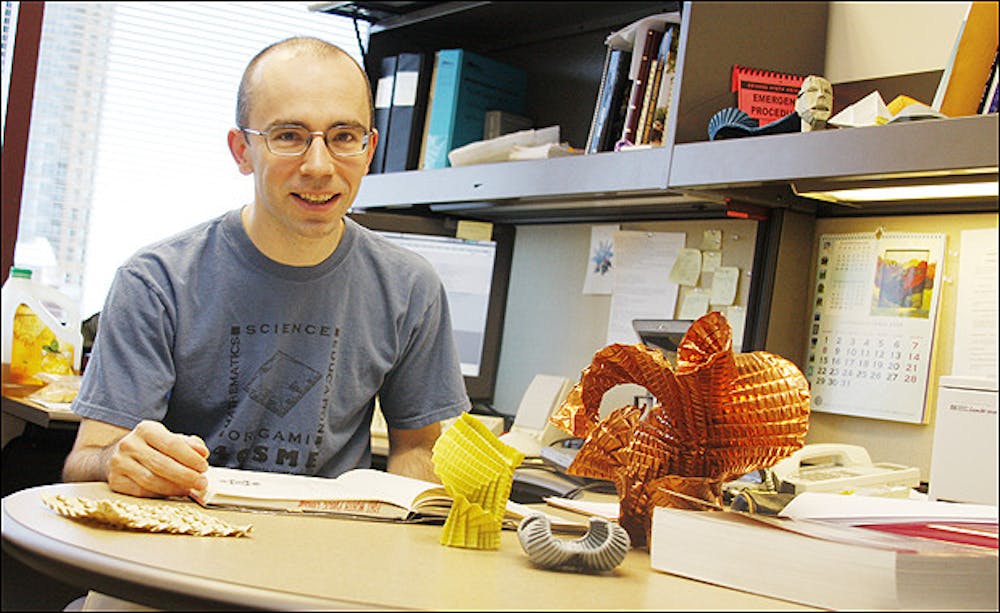The ancient art of origami might be thought of as simply a fun hobby, but one engineering professor uses folded paper to teach the fundamentals of engineering.
Goran Konjevod, a computer science and engineering professor, said he applies the concept of origami to engineering skills in order to keep his students interested.
“Origami provides excellent examples that span both serious topics and fun exercises for teaching mathematics, computer science and engineering design,” he said.
Konjevod said origami relies on very simple means and materials to construct sometimes fairly complex objects.
“It’s not just birds and flowers,” he said. “There exist bowls, springs; even a functional bolt and nut have been designed out of paper.”
Figuring out the design of the intended object and then folding it incorporates research and design principles, planning the construction of an actual model/prototype and then testing it, he said.
Konjevod said he taught an engineering design course that required building a bridge out of a maximum of 50 sheets of ordinary printer paper.
“We tested the bridges by spanning a 2-foot gap between tables and hanging weights from the center of the bridge,” he said. “We actually ran out of weights and ended up using calculus books before managing to break the strongest bridge — it held almost 30 pounds.”
The current honors seminar that Konjevod teaches uses more examples because it is completely centered on origami.
“We’ve covered curvature and surfaces, algorithms and other topics,” he said. “Right now we are exploring the geometry of tilings.”
Folding, the main principle behind origami, has been used in several engineering breakthroughs, including a telescope lens that can be transported into space in a relatively small space shuttle and then unfolded into a larger area, he said.
In medicine, a stent — a man-made tube that’s inserted into a passage in the body to prevent or counteract a flow constriction — has also been made so that it can be put into a blood vessel while folded; it then unfolds into a much larger, functional shape.
In January, Konjevod’s folding techniques won the first-place prize at the Exhibition of Mathematical Art in January.
Annalisa Crannell, one of the judges and a professor of mathematics at Franklin & Marshall College, said Konjevod’s prize-winning piece was good for both the eyes and the brain.
“It’s all using straight folds, so it should be pretty obvious that you’re going to get something straight,” Crannell said. “But [Konjevod’s piece] is really organic and curvy.”
There’s an interesting tension that she said she found to be “really lovely.”
“One of the things I like about both mathematics and art is I can be surprised by something I thought I understood before,” Crannell said.
Reach the reporter at charlsy.panzino@asu.edu.




